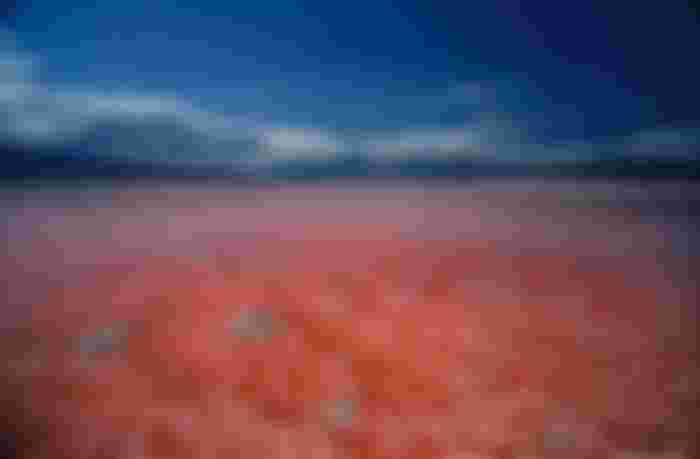Lake Natron looks rather frightening - its waters are predominantly red. So why isn't the water here blue, blue, or green, like in normal lakes?
The name says it all.
Lake Natron in Tanzania is a calm but very unusual body of water in Africa. First of all, it has to do with its chemical composition - it has a higher alkali content and mineralization of the water. The water in Africa is not very good, and nature has also generously poured all sorts of chemicals into the only lake in the area.

Natron is famous for its colorful waters. The lake is colored red with shades of pink. The reason for this unusual phenomenon is the mineral composition of the flowing river. The water under the influence of the hot climate evaporates quickly, leaving minerals in the basin.
Among the mineral composition, the concentration of sodium is particularly strong. This is where the name of the lake comes from.
Photographers love it.
Natrona also has the eerie ability to mummify dead birds caught in the alkaline water. This, along with the colorful waters, attracts tourists and photographers to the protected area of Lake Natron.
On the periphery of the lake there are several hot springs, so it is quite hot. Usually the water temperature in the reservoir is 40 degrees, but in some areas it rises to 50 degrees. In addition, the high content of alkali significantly limits the range of possible inhabitants of the world of flora and fauna. But what is surprising: the lake is far from lifeless. Someone wanted to settle in such conditions.

Cyanobacteria are permanent residents of Natrona. The microorganisms feed using the process of photosynthesis, thanks to which they color the water pink. It combines well with the red that the minerals provide. In general, individual areas of Natrona have different colors, from yellow to bright scarlet.
The birds like it.
Wetlands on the edges of the lake are very attractive to many native plants: warm water and natural fertilizers. Natron is unique in that it is the only area where small flamingos from all over Africa nest. During the season, the bird population reaches 2.5 million.

Besides flamingos, other birds live here, but most of them are migratory. The area is attractive to birds because there are no dangerous predators. In addition to bacteria, fish also live in the waters. The only species capable of surviving in a highly alkaline environment is tilapia. The hot water around the edges of the lake was very comfortable for it.
At present, the lake is not threatened by anything. But 20 years ago a large construction of a chemical factory was planned here, which would have destroyed the lake together with its inhabitants.
It's amazing how some animals choose their habitat. Some like to live in volcanoes.


